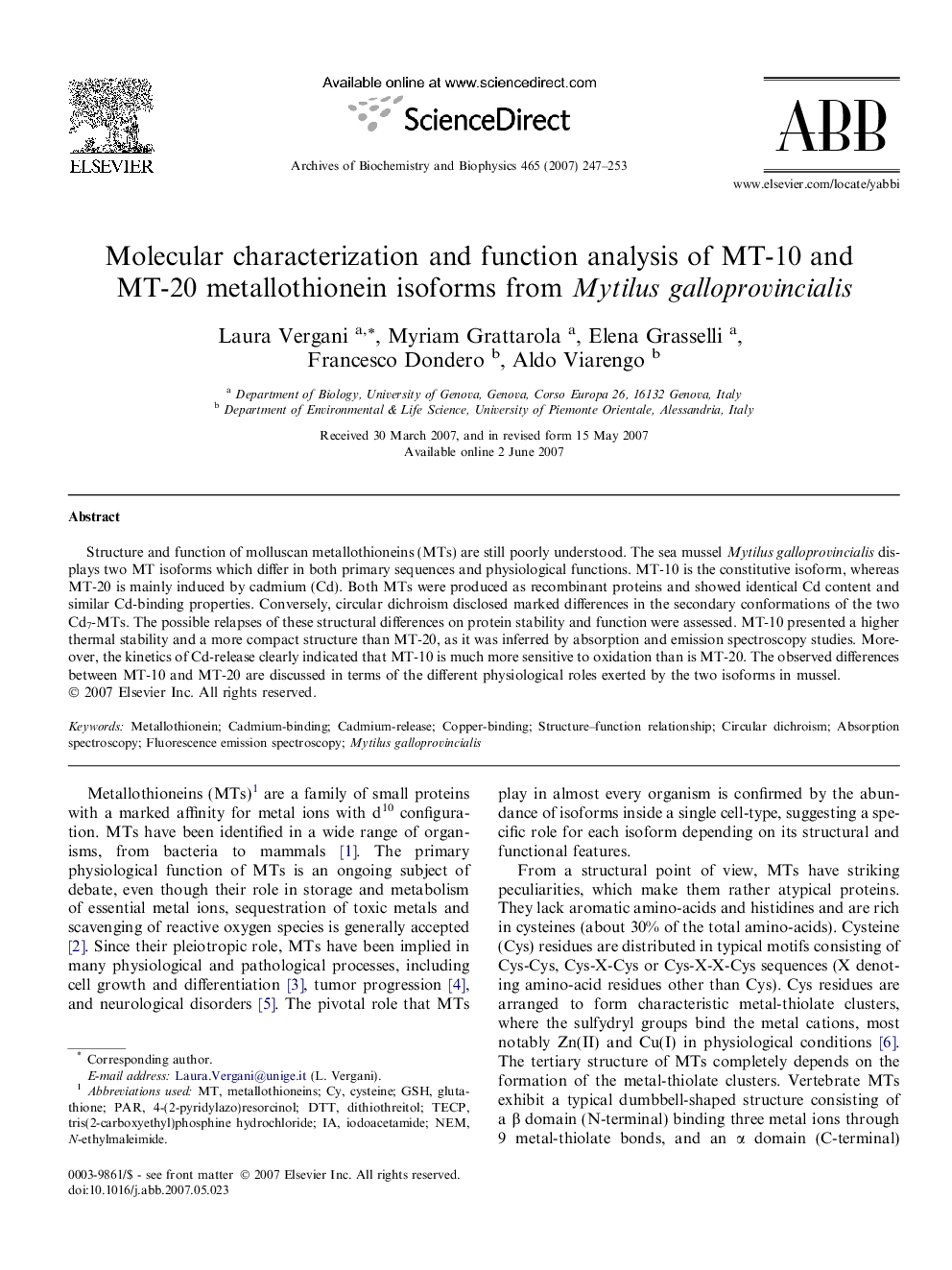| کد مقاله | کد نشریه | سال انتشار | مقاله انگلیسی | نسخه تمام متن |
|---|---|---|---|---|
| 1927061 | 1536496 | 2007 | 7 صفحه PDF | دانلود رایگان |

Structure and function of molluscan metallothioneins (MTs) are still poorly understood. The sea mussel Mytilus galloprovincialis displays two MT isoforms which differ in both primary sequences and physiological functions. MT-10 is the constitutive isoform, whereas MT-20 is mainly induced by cadmium (Cd). Both MTs were produced as recombinant proteins and showed identical Cd content and similar Cd-binding properties. Conversely, circular dichroism disclosed marked differences in the secondary conformations of the two Cd7-MTs. The possible relapses of these structural differences on protein stability and function were assessed. MT-10 presented a higher thermal stability and a more compact structure than MT-20, as it was inferred by absorption and emission spectroscopy studies. Moreover, the kinetics of Cd-release clearly indicated that MT-10 is much more sensitive to oxidation than is MT-20. The observed differences between MT-10 and MT-20 are discussed in terms of the different physiological roles exerted by the two isoforms in mussel.
Journal: Archives of Biochemistry and Biophysics - Volume 465, Issue 1, 1 September 2007, Pages 247–253